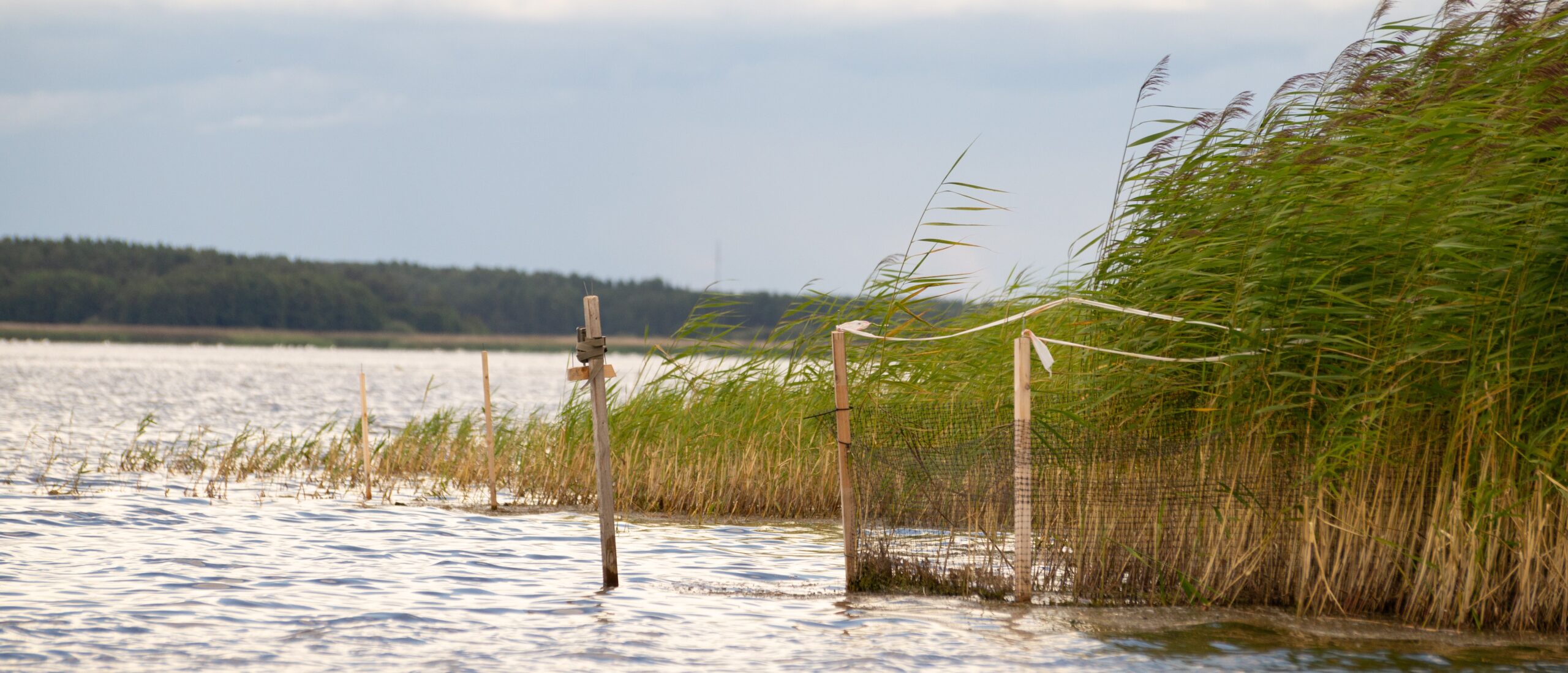Study system
Lake Tåkern
Lake Tåkern is a shallow, moderately eutrophic lake in south-central Sweden (58° 21′ N, 14° 48′ E), covering approximately 44 km², with 70% open water and 30% reedbeds.
In 1974, Lake Tåkern was designated a Ramsar site due to its biodiversity and significance as a waterfowl feeding and nesting area in Northern Europe. It became a nature reserve in 1975 and has been part of the Natura 2000 network since 2016, protecting nine natural habitats. The Lake Tåkern reserve spans 54 km² and hosts around 270 bird species, with 130 species nesting there.

Reed (Phragmites australis) in Lake Tåkern
The common reed (Phragmites australis) is a clonal, rhizomatous perennial grass species that forms dense stands, which cover extensive areas in wetlands. These stands often originate from a single root system and spread through rhizomes. The species reproduces through multiple mechanisms: seed dispersal, vegetative spreading, or fragmentation of rhizomes, which can form floating reed mats. The primary mode of reed reproduction is vegetative, as seed germination and establishment require specific conditions with lower water levels sustained over time. In the late 1800s and 1930s, during dry spells and deliberate water-level reductions at Lake Tåkern, the reed expanded significantly due to seed regeneration.
Reed has long been harvested for livestock fodder and roofing material. Today, reed mowing at Lake Tåkern is only allowed in specific areas within the western part of the reserve, and only in winter or spring, with approval, to avoid damaging reedbeds and bird habitats.
Drone pictures: Pierrick Meuillet
Greylag goose (Anser anser) in Lake Tåkern
Greylag goose (Anser anser) (Fig. 3) is the most numerous goose species at Lake Tåkern. As all migratory birds, geese exhibit specific habitat-use patterns during phases of their annual lifecycle. During the breeding stage, geese tend to stay in wetlands with nourishing vegetation and close access to water for nesting, incubation, and raising their young. During the moulting stage, a period of replacement of flight feathers, geese prefer large open water bodies with ample food resources and minimal disturbances. In post-moulting period, the birds prepare for autumn migration to winter quarters, they spend the night in the lake and in the morning fly out to surrounding farmlands for foraging. These habitat-use patterns are observable at Lake Tåkern, where greylag geese are present in substantial numbers throughout all periods.
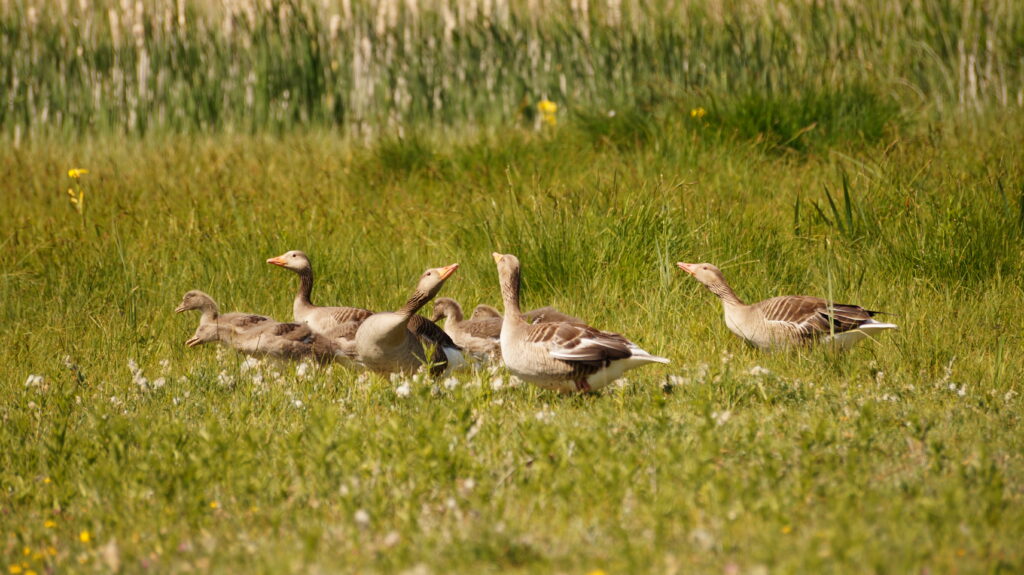
Long-term development of reedbeds in Lake Tåkern 1960-2022
To study long-term changes in reed coverage at Lake Tåkern, a reed coverage analysis was performed using high-resolution satellite images from the the available years 1960, 2004, 2013, 2017, and 2022. Four larger reedbed areas were selected (Fig. 4), and TIFF files were exported for further assessment.
TIFF files were converted to 8-bit and underwent minor adjustments in Lightroom Classic to mask areas misidentified as reed (e.g., waves, spots, and other vegetation). Finally, in ImageJ, manual thresholding was applied to determine the percentage of reed in each area.
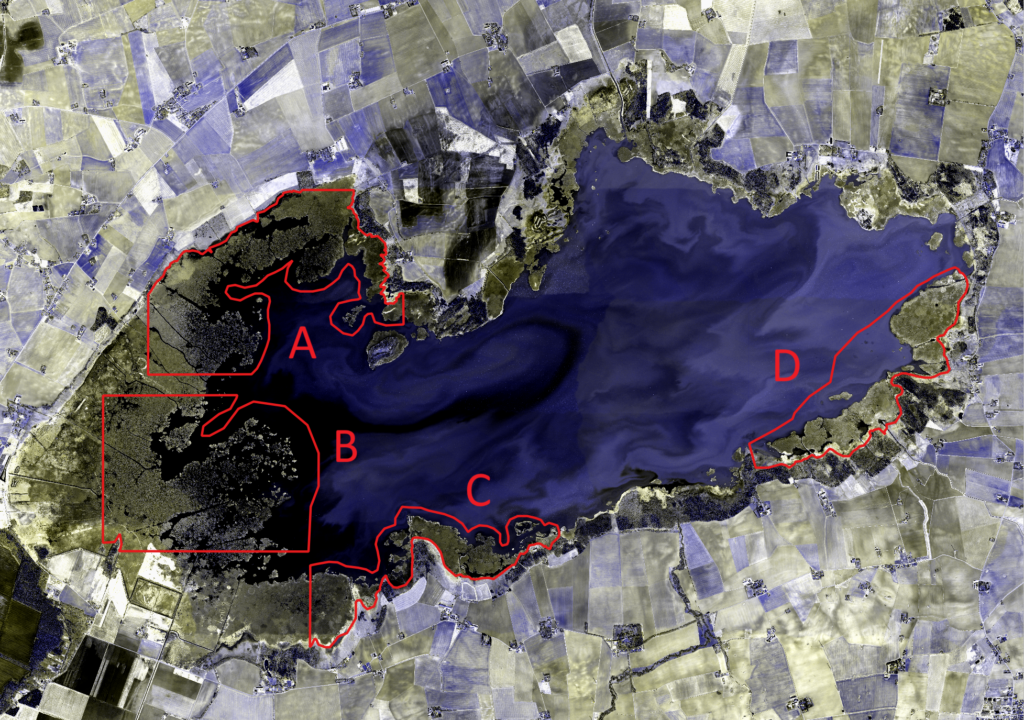
Long-term variation in number of greylag goose in Lake Tåkern 1998-2023
The number of greylag geese was assessed using historical data provided by Tåkerns Field station. Data has been collected annually since 1998, employing a consistent monthly point count method at seven locations around the lake. These counts capture geese during their morning flight from the lake, where they spend the night, to the feeding areas in farmlands, starting at sunrise.
For the analysis, the pre-migration and migration periods (August, September, and October) were selected. These months were chosen based on their consistently high bird numbers compared to other months. This pattern can be attributed to the behaviour of geese during this time: in August, birds shift their habitat to feed on land, in this case in the surrounding farmlands, while in September and October, they start their migration, congregating in larger flocks on the lake.
Field exclosure experiment
The field experiment involved the construction of 8 net cages, called exclosures, each paired with a control site.
The cages were placed arbitrarily along the edge of the reedbeds, covering a 1.5 km stretch of wetland near the bird-watching tower at Glänås in the southern part of the lake. The construction of the exclosures aimed to prevent disturbance by waterfowl to the reeds: four wooden poles with plastic netting around them (refer to Fig. 5). Additionally, two red-white bands were suspended diagonally on top of each cage to deter birds from landing within them. Control sites were of the same size but lacked a net and provided full access to the reeds.
Each cage was half occupied by reedbed and half by open water to later compare parameters by habitat.
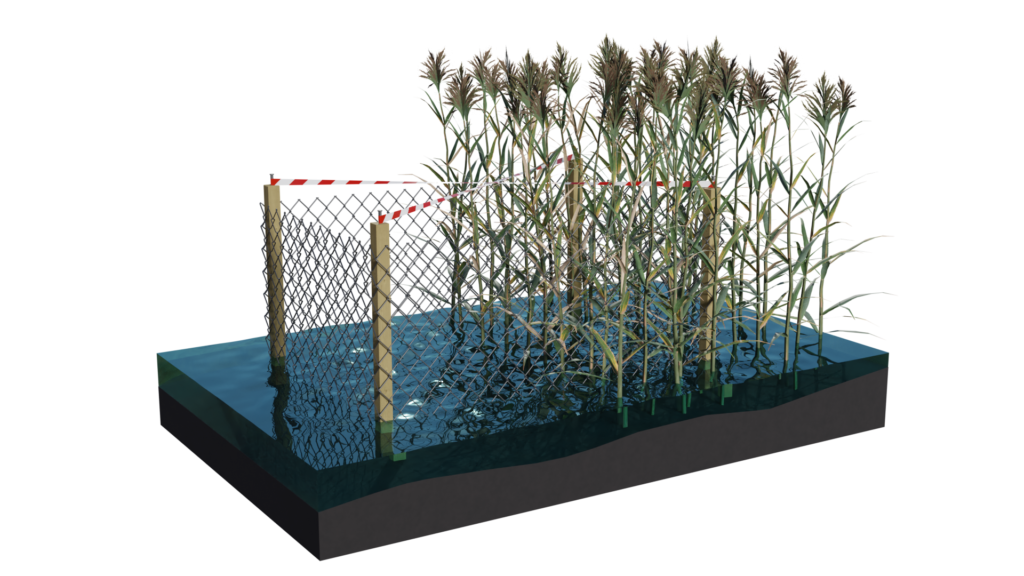
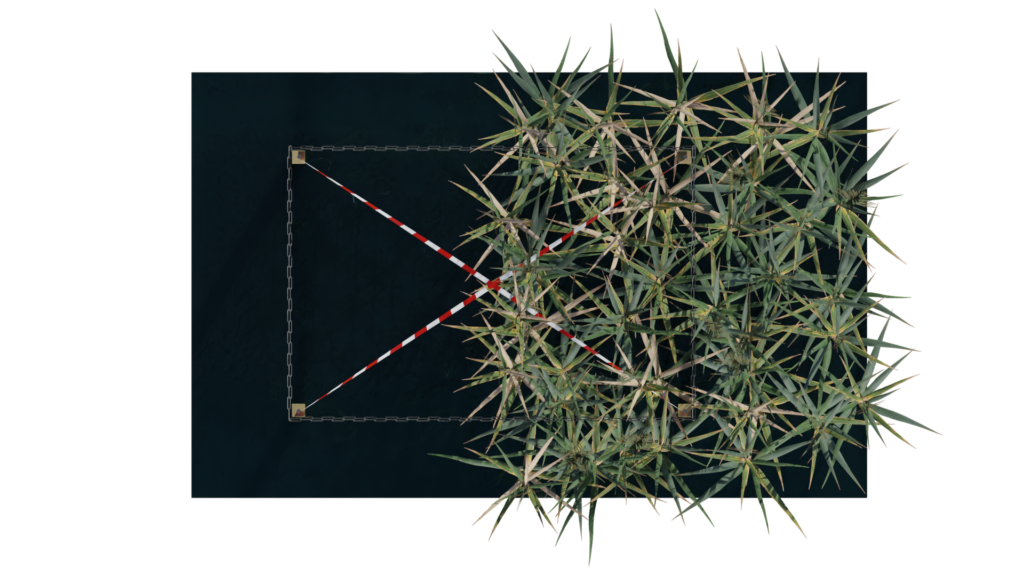
Figure 5. Construction of the Exclosures: A) Three-dimensional view; C) Top view.
3D model: Sergey Pidgaiko
Sampling methods and statistics
Sampling periods were scheduled to coincide with the breeding, moulting and post-moulting stages of geese (02 June, 25 July, 27 August). Bird count period included additional dates: 29 April and 16 September.
| Parameter | Data collected | Methods |
| Waterfowl count | Species diversity and abundance | Point count |
| Emergent vegetation | Reed height, reed density, reed biomass, non-reed species diversity and biomass | Quadrat method |
| Submerged and floating vegetation | Species diversity, biomass | Quadrat method |
| Active aquatic invertebrates | Family diversity, abundance, and size distribution | Activity traps, laboratory identification and size categorisation |
| Water chemistry | Temperature, Chl-a, Turbidity, Oxygen (mg/l, %) | field measurements using oxygen meter, and laboratory analysis using nephelometric turbidity meter and spectrophotometer |
Statistics
All statistical analyses and visualizations were carried out using R software (Version R-4.3.2, 2023). Paired t-test was used to assess differences between exclosures and matching control sites. Kendall’s rank correlation was applied for the long-term analysis of geese numbers, and a two-sample Kolmogorov-Smirnov test was used to compare invertebrate size distributions between exclosures and control sites.
